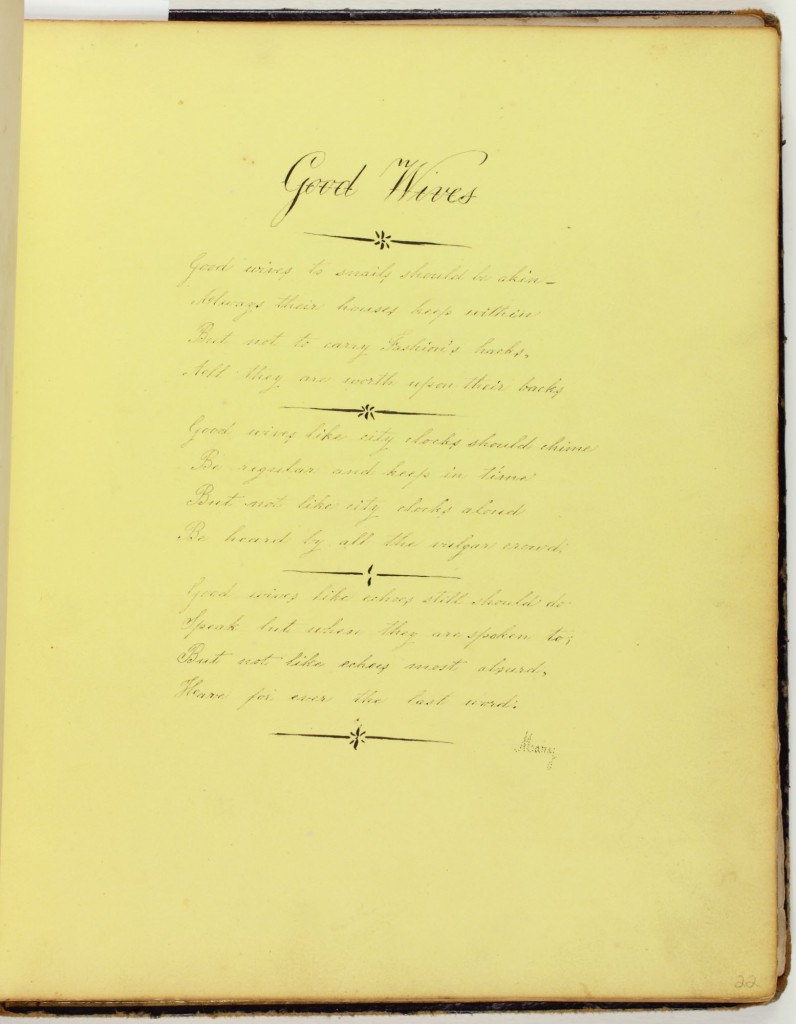Preface (3)
6|7|8|9|10|11-12|13|14|15|16|17|18|19|20|21|22|23|24|25|26|28|30|31|32|33
34|35|36|39|42|44|47|49|51|52|53|54|55|56|57|59|62| 63|64-68|70|73|75
Good Wives
Good wives to snails should be akin –
Always their houses keep within
But not to carry Fashion’s hacks,
All they are worth upon their backs
Good wives like city clocks should chime
Be regular and keep in time
But not like city clocks aloud
Be heard by all the vulgar crowd.
Good wives like echoes still should do
Speak but when they are spoken to;
But not like echoes most absurd,
Have for ever the last word.
Mary
Mary Wood Forten (1815-1840) describes in metaphor the various characteristics, including domesticity, punctuality, and politeness, she attributes to a good wife in her original poem “Good Wives.” “Good Wives” reflects the primary set of 19th-century tenets, known as the “cult of domesticity,” which fostered the home as central to the role of upper and middle-class women. The tenets domesticity and submissiveness are especially significant in this poem. To be identified with “true womanhood,” antebellum middle-class African American women would need to embody these traits promoted and revered in this poem.
Page 22: Selected from an unattributed poem, which was printed widely, but most likely originated in London. It appeared in the 1824 issue of The Poetical Note-Book and Epigrammatic Museum, which was published in London by A. Robertson & Co.

